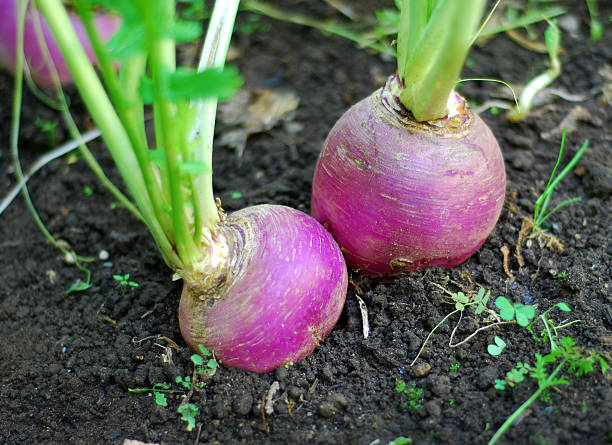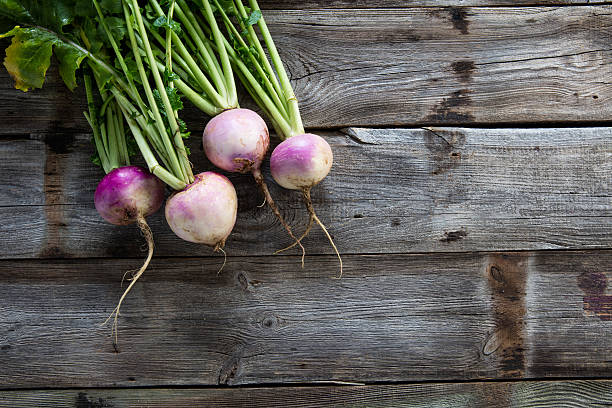Especially in Central Europe, the nutritious beet was found on the menu for many centuries. However, with the arrival of the potato in Europe, its importance as a staple food was lost. After that, they were used more as animal feed. Only in recent years has this tasty root vegetable made a comeback.
The variety of beets is greater than you think. There are various types of beet, such as May beet, autumn beet, or Teltower beet. The variety of varieties and names alone is evidence of wide distribution. As there are, among other things, the stubble, white turnip, water turnip, field turnip, etc. In Austria, they are also called Wruken, and in Switzerland Räben. By the way, kohlrabi (or turnips) and turnips are separate species.
May turnips and white turnips are particularly popular and are also suitable for eating raw in a salad. They taste best glazed as a side dish, as a puree, stew, or soup, as classic “sour turnips” or in the typical Burgenland strudel. The young leaves of the turnip are called stalks and can be prepared like spinach.

Healthy all around: beet nutrients
In terms of taste, beets are close to radish, but not as spicy. Turnips are usually juicier too. As the name suggests, turnips and autumn turnips are available from early summer to the cold season. This is a good thing because in and after the winter and for the cold season we need an extra dose of vitamins that are contained in the beet anyway. Rich in vitamin C, folic acid, magnesium, and iron, the autumn turnip is an ideal source of vitamins. You can also recognize the mustard oils it contains by the slightly sharp taste of the beets. Because of this, they have an antibacterial effect. With over 90% water content, the autumn turnip is the most water-rich root vegetable and has only 24 kcal/100 g.
This is how your turnip will hold up
Turnips are usually available fresh at farmers’ markets from April to October. Since they can also be stored very well, you can actually get them all year round. If you have an earth cellar at home, it’s worth buying a few more turnips. But even in the vegetable compartment of your refrigerator, the hearty turnips will keep for a few days.
Various ways of preparing the beet
Like other root vegetables, turnips can cause mild flatulence. Therefore, for the good of all, they should be seasoned with caraway, coriander and bay leaves when cooking. If you add cider vinegar or lemon juice and sugar, the characteristically earthy taste will be softened. An interesting variation is the savory sheet cake with turnips!
Special Interest: Turnip
The coat of arms of Keutschach am See in the Austrian province of Carinthia shows how important and highly regarded beets used to be. The Salzburg Prince-Archbishop Leonhard von Keutschach also had beets in his coat of arms and had the so-called “Rübentaler” minted in the 16th century.

In Tyrol there is the “Wildschönauer Krautingerrübe”, which was practically ennobled by Empress Maria Theresia: Only in the Wildschönau and nowhere else was it allowed to distil a schnapps from the stubble turnip. It can still be drunk with bacon snacks today. Incidentally, at the beginning of October, there is Wildschönau Krautinger Week for all beet enthusiasts.
After bringing in the last “Räben”, the Swiss carve lanterns from the autumn turnips, which are carried through the streets in a procession as “Räbenlichter”.
Autumn turnips have been cultivated more intensively in Burgenland for several years. Some farmers have specialized in their cultivation and offer the beets from the farm.
